
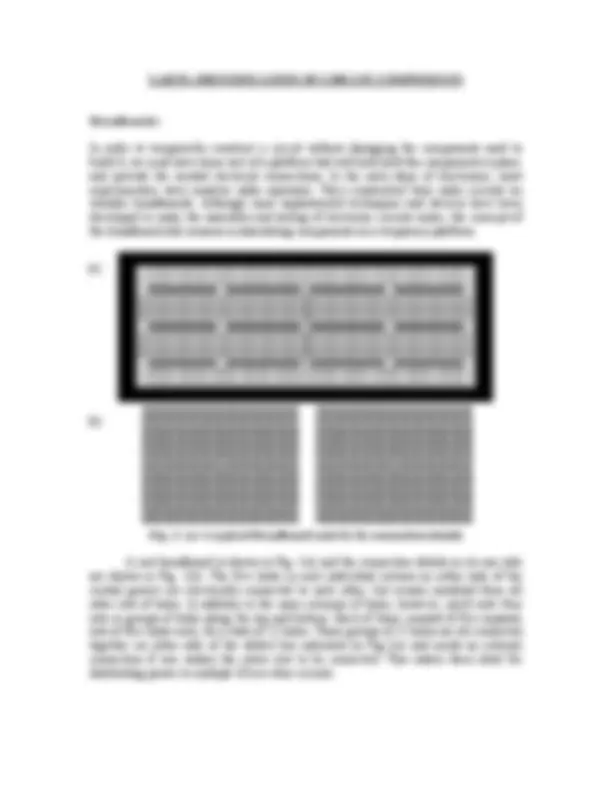
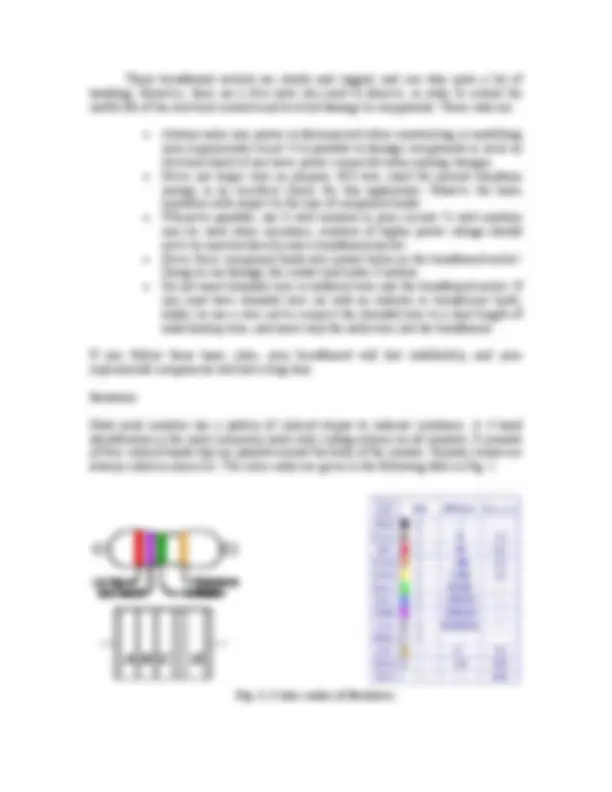
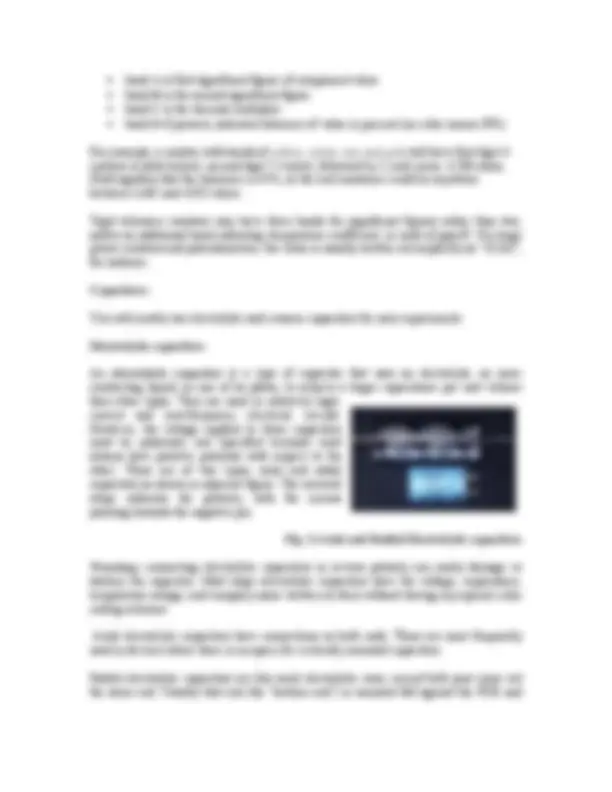
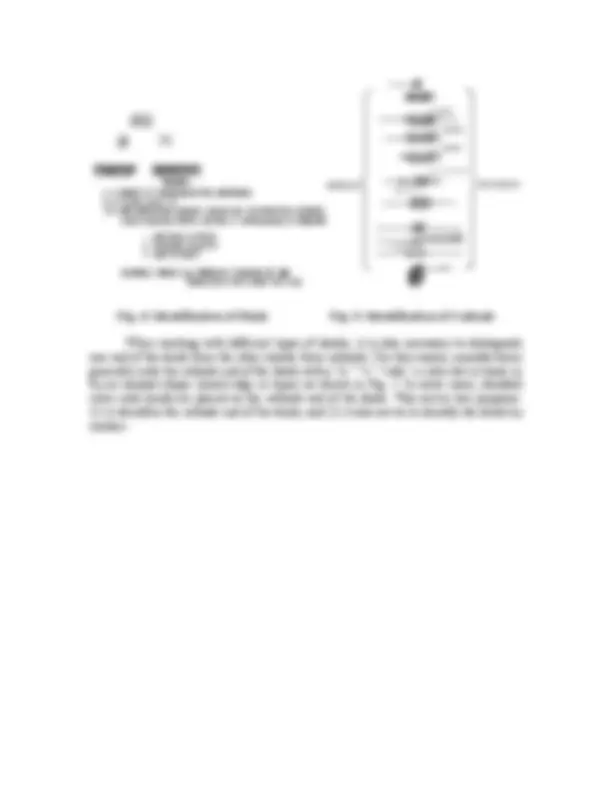
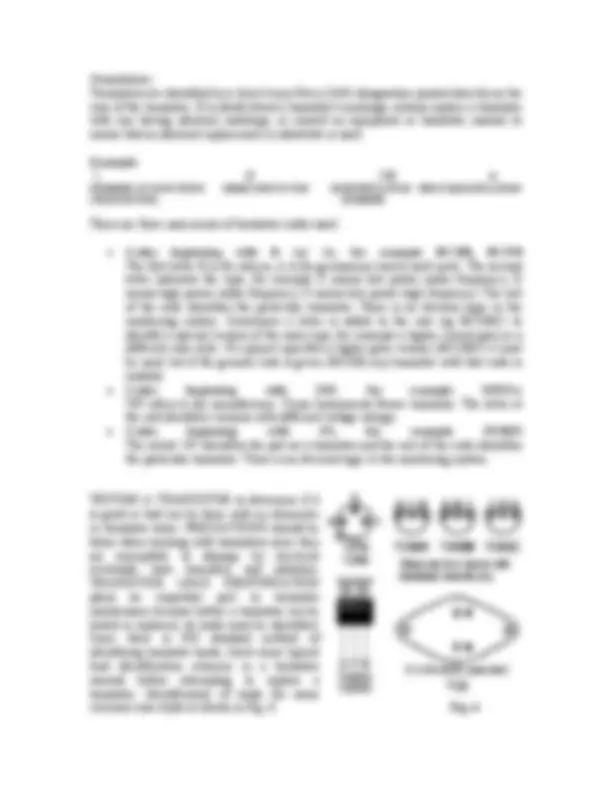
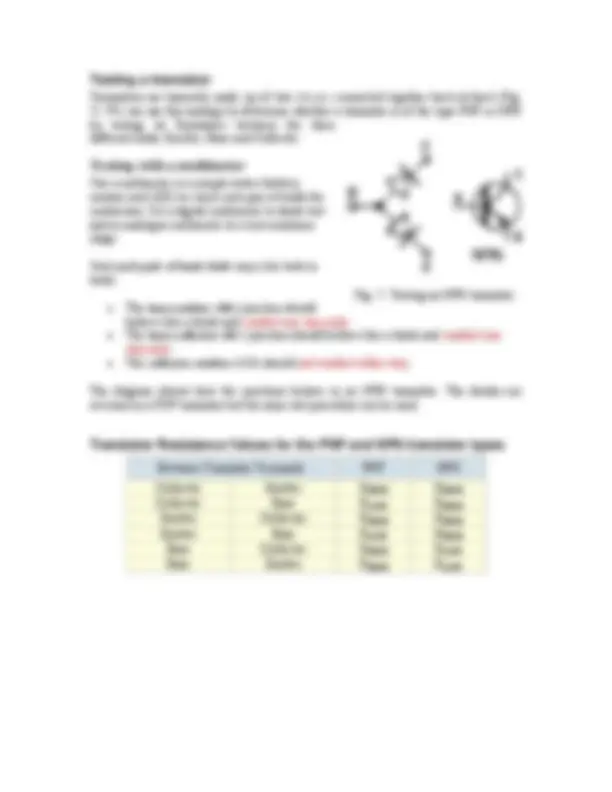
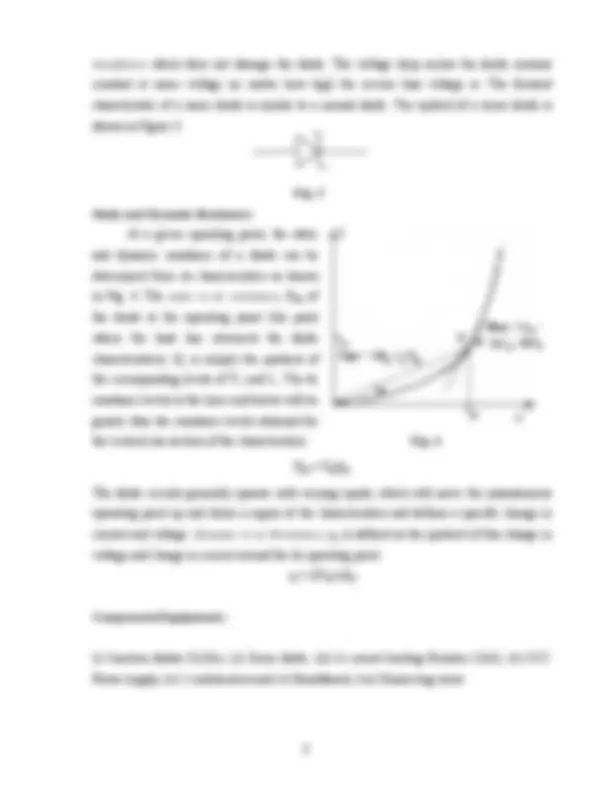
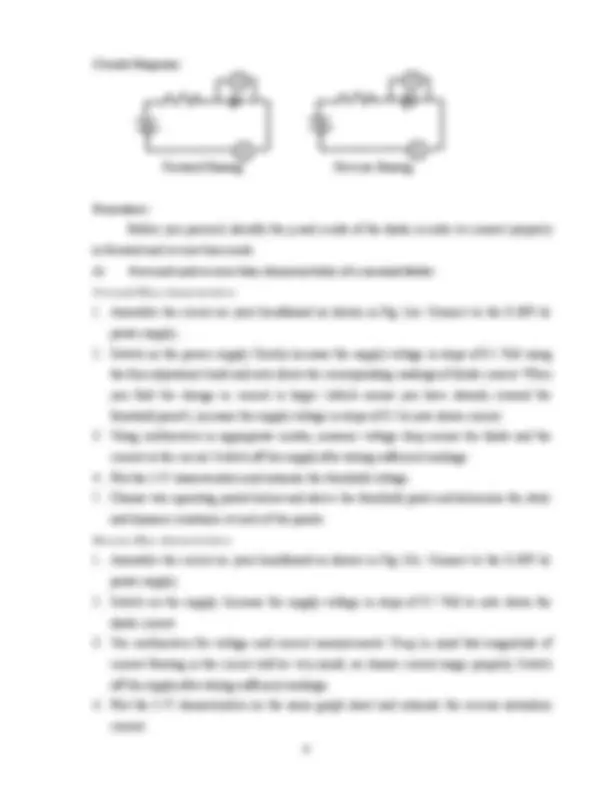
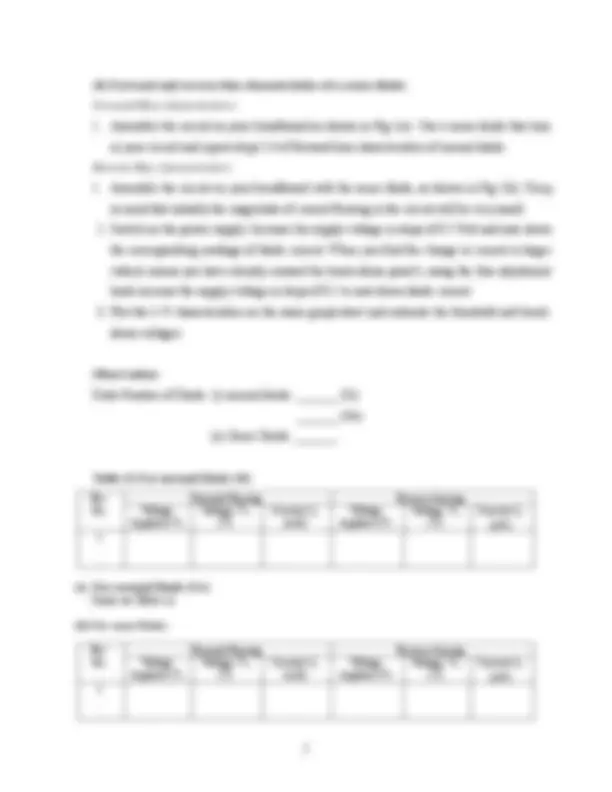
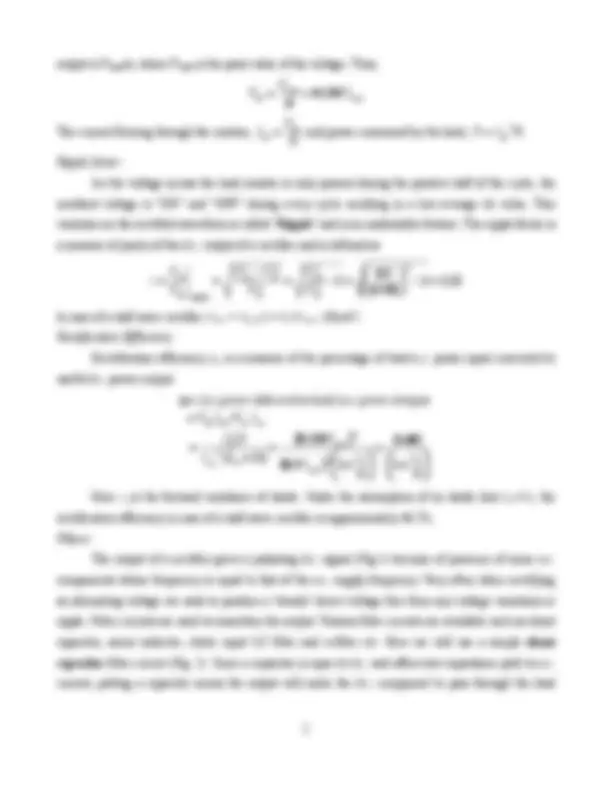
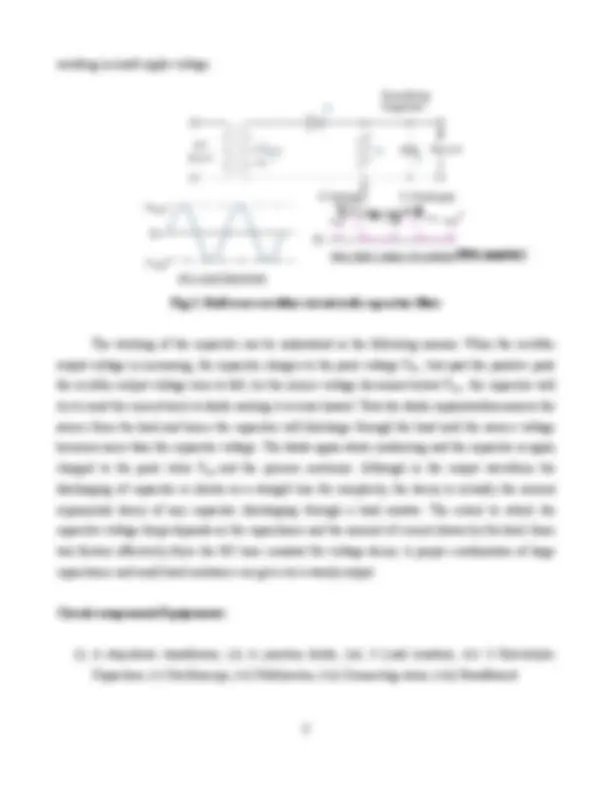
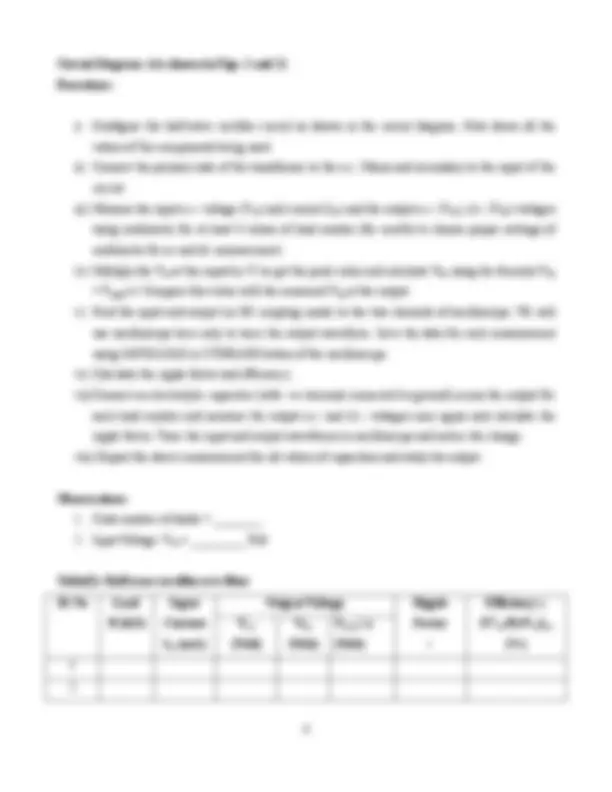
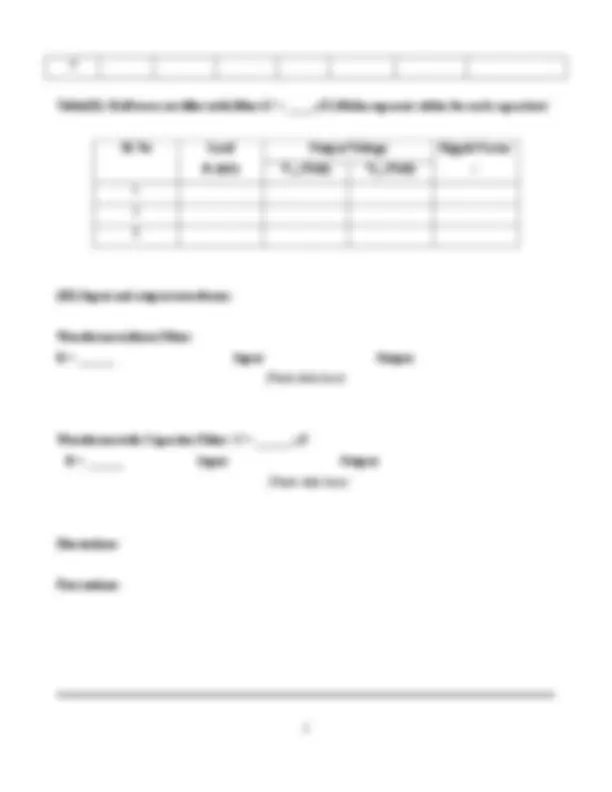
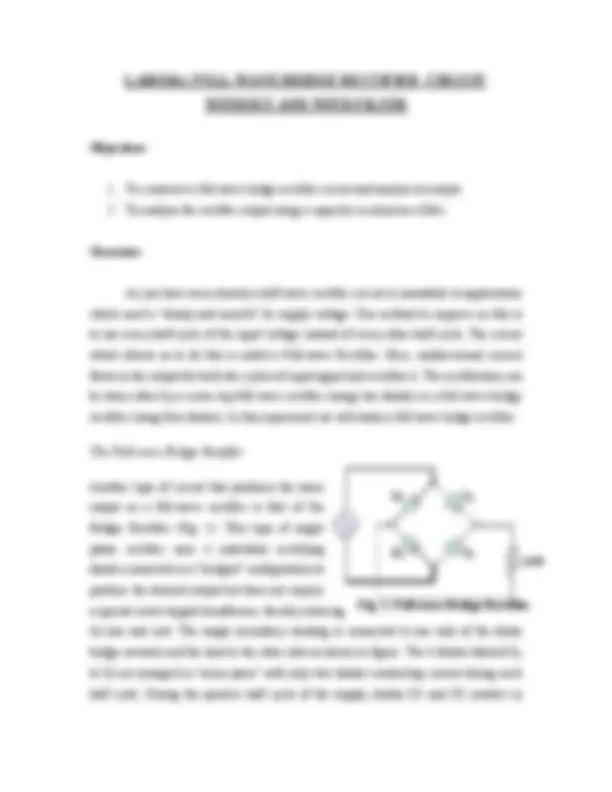
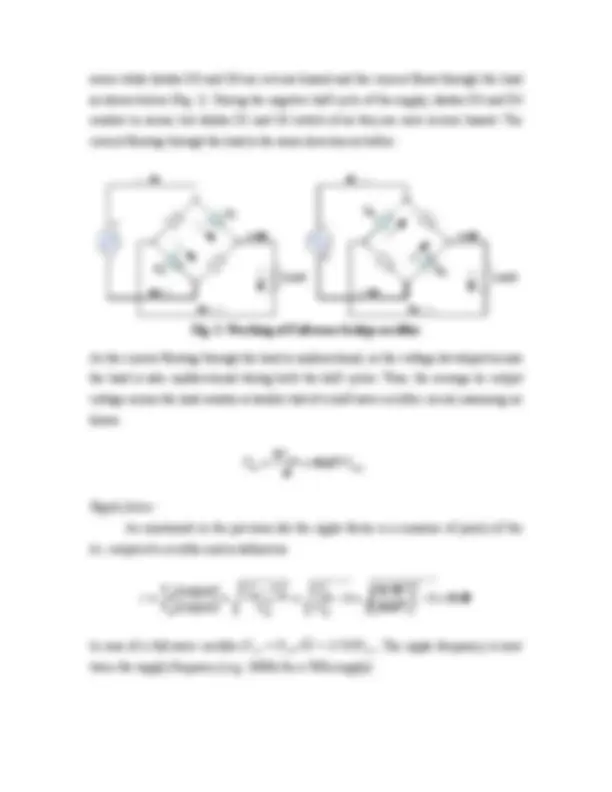
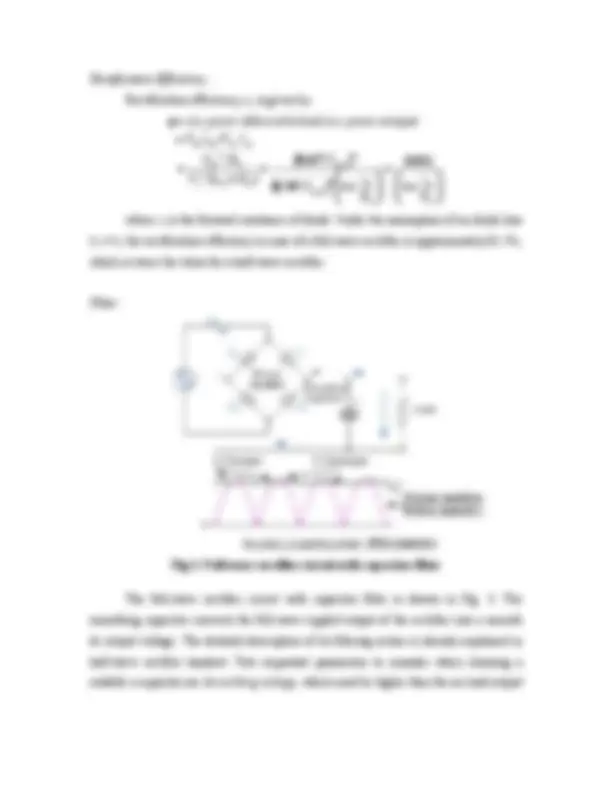
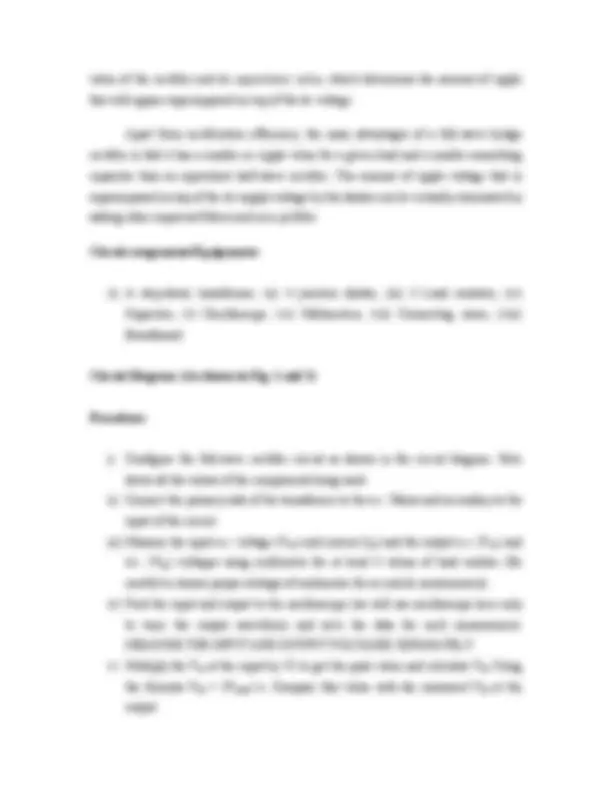
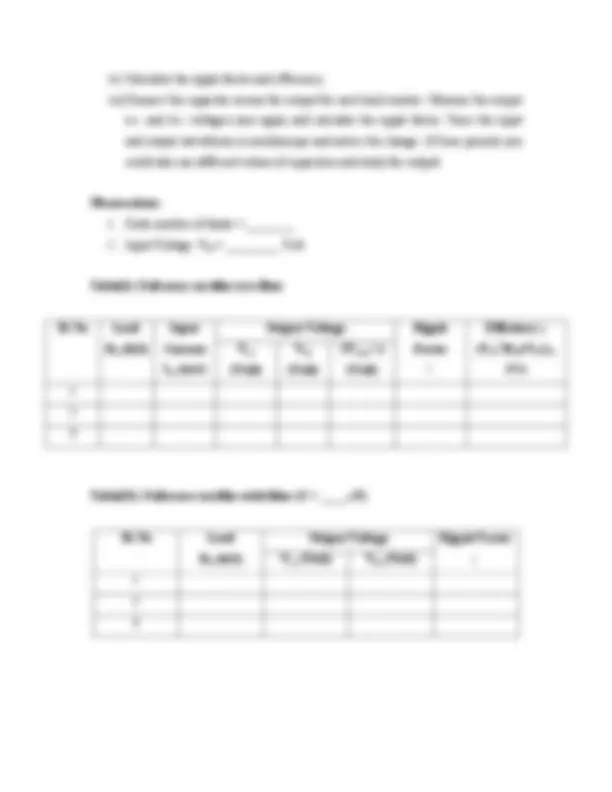
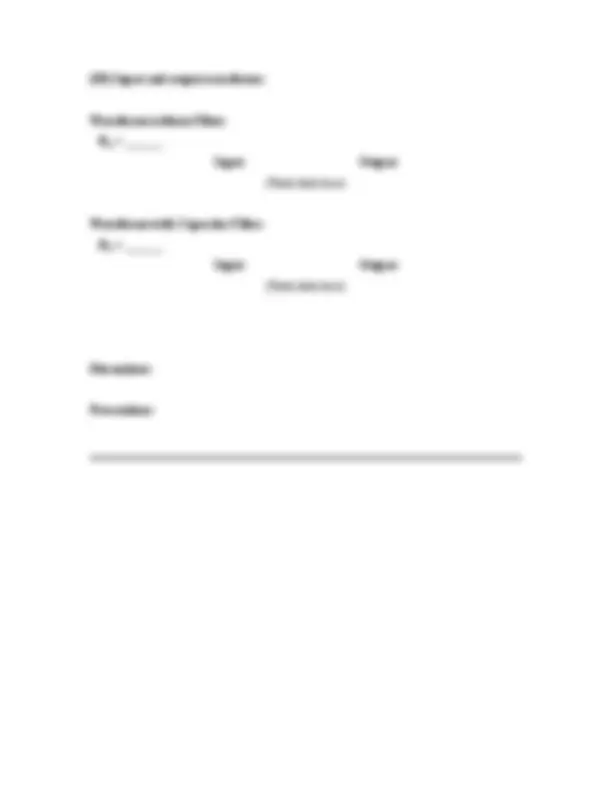
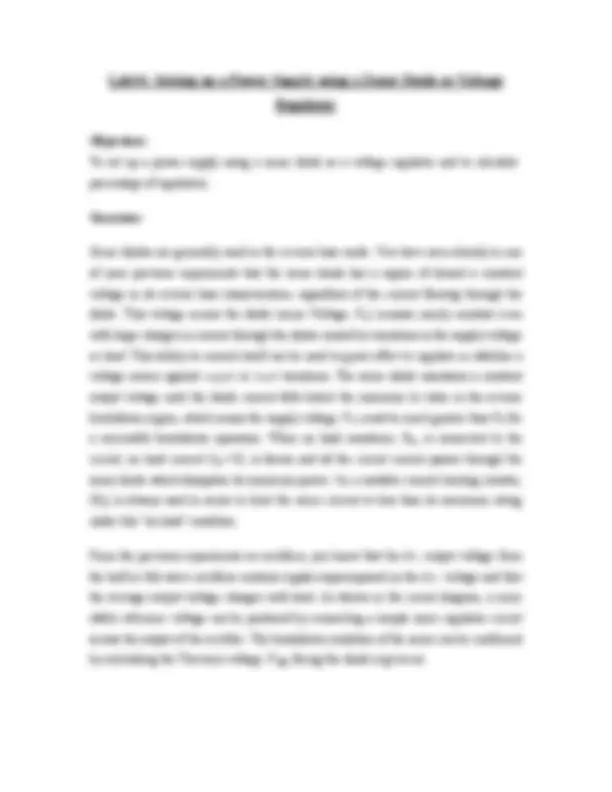
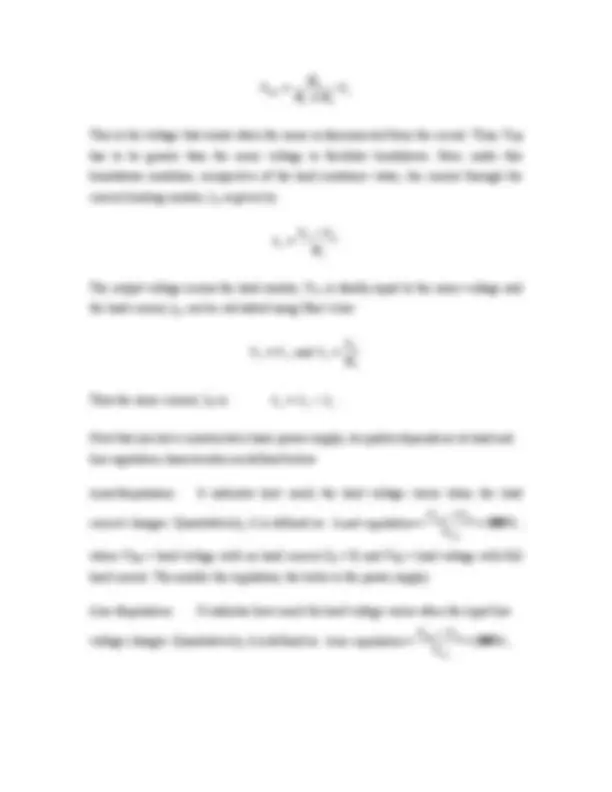
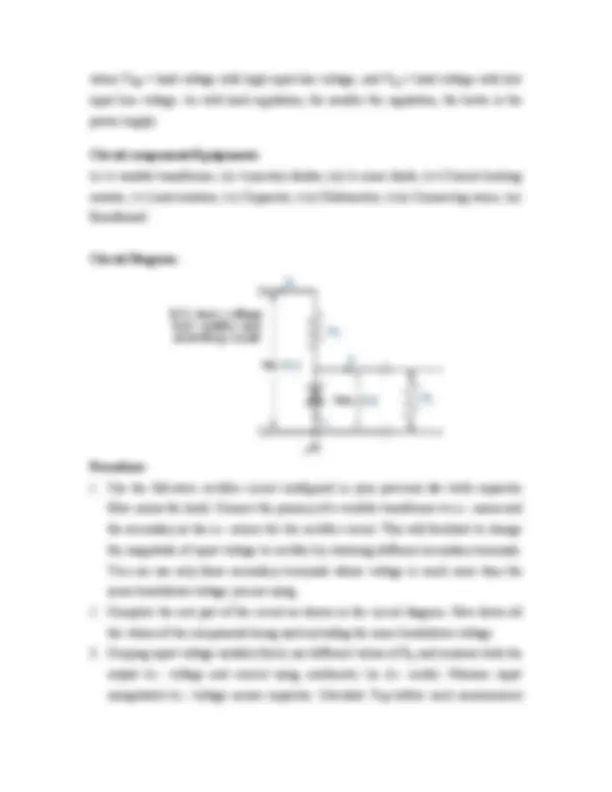
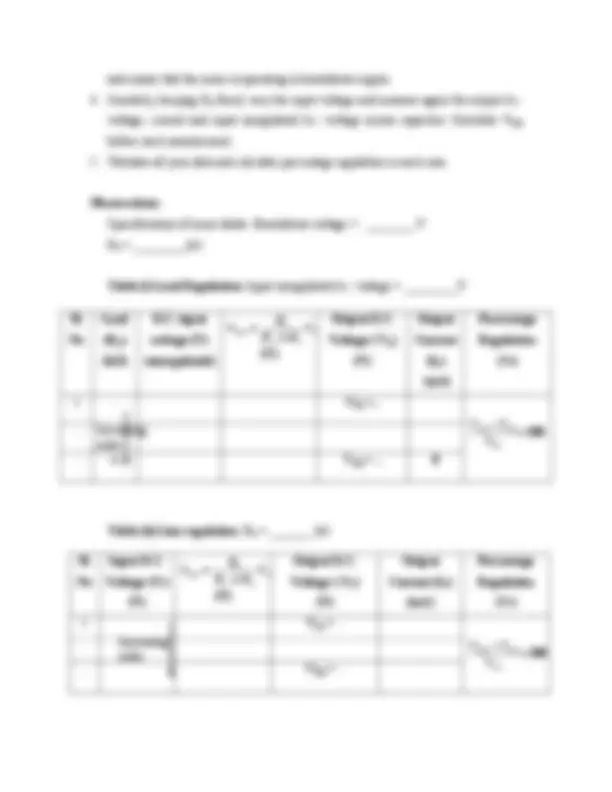
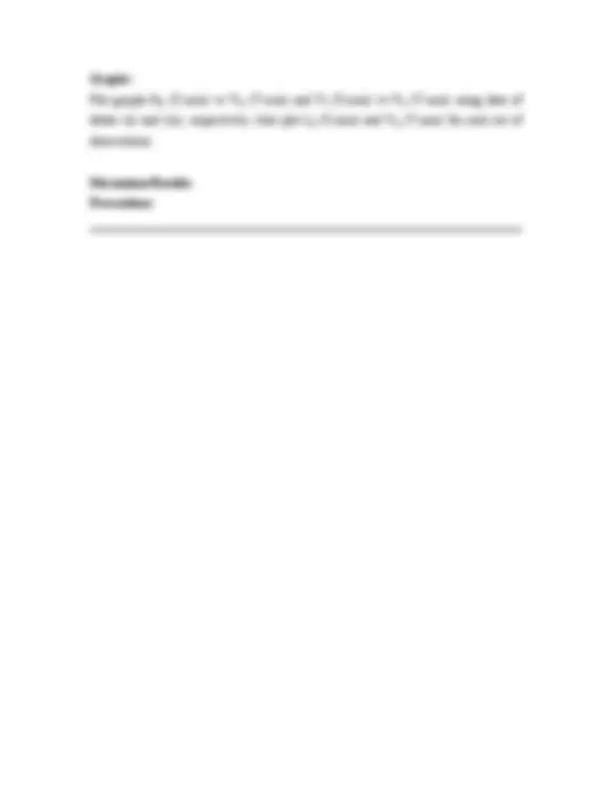
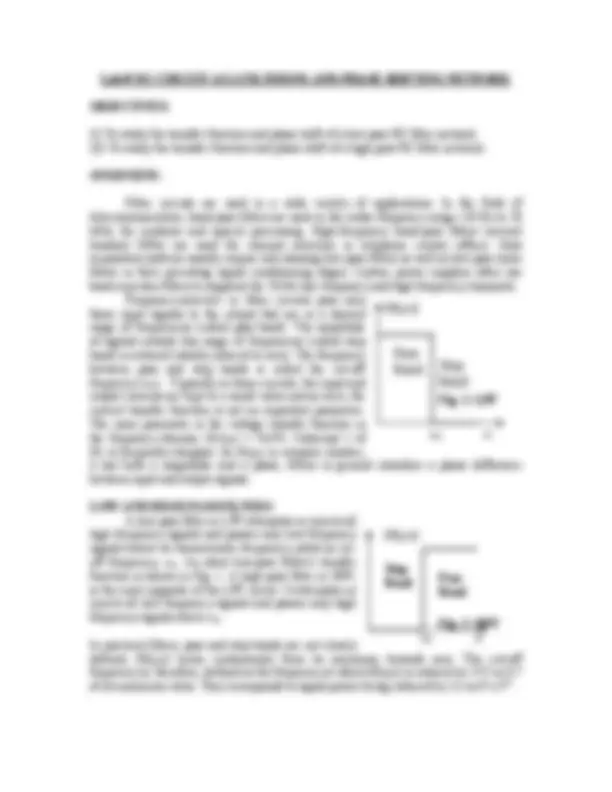
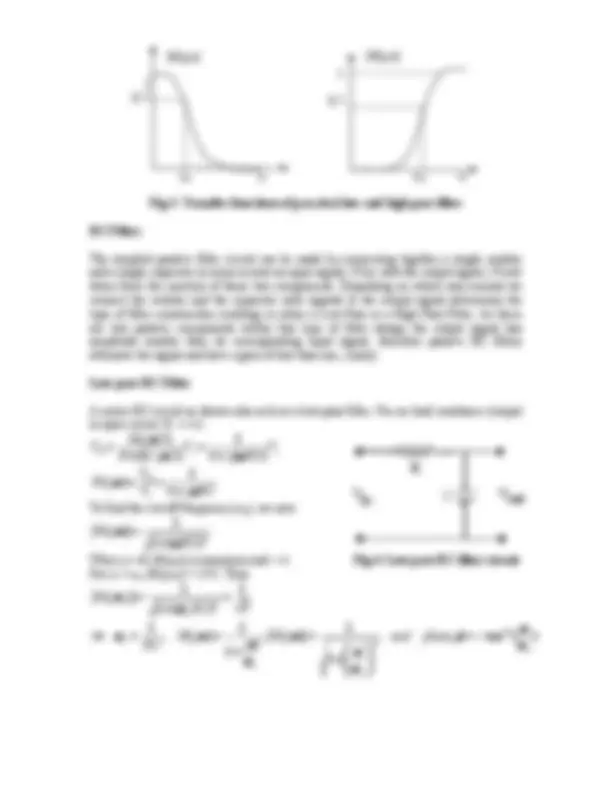
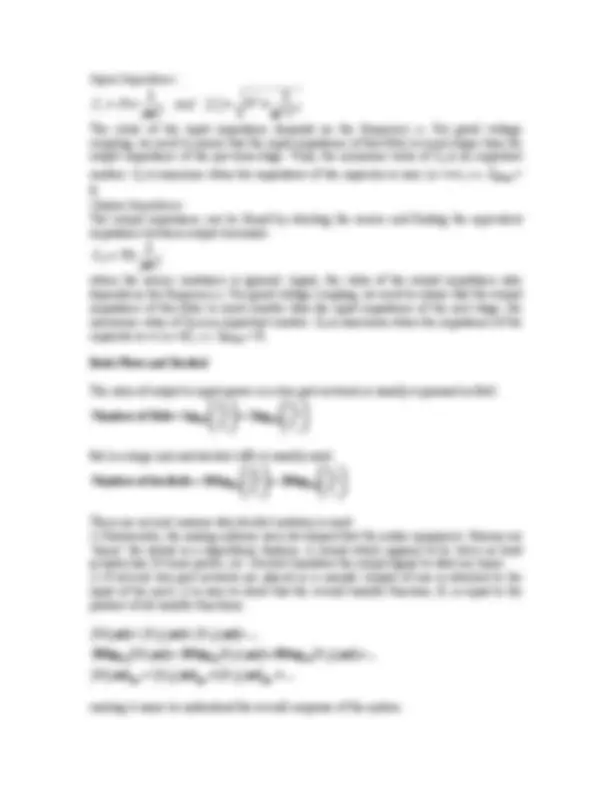
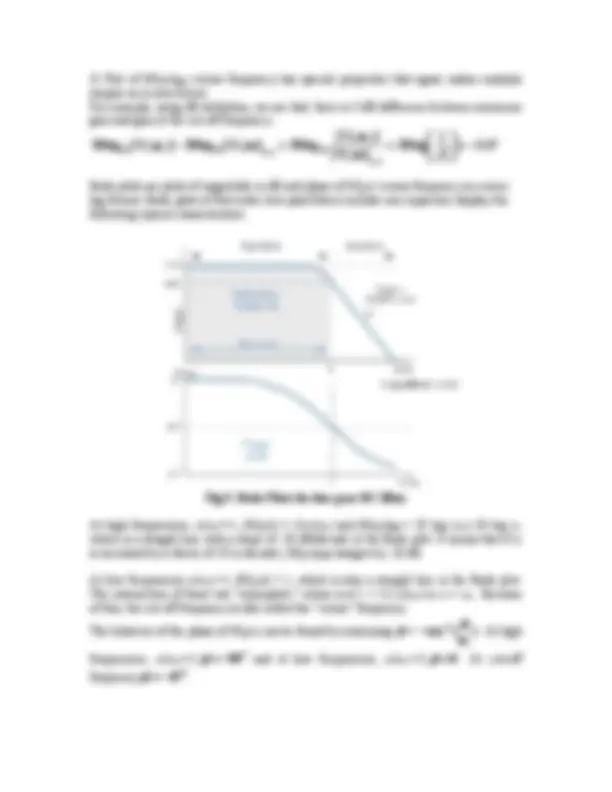
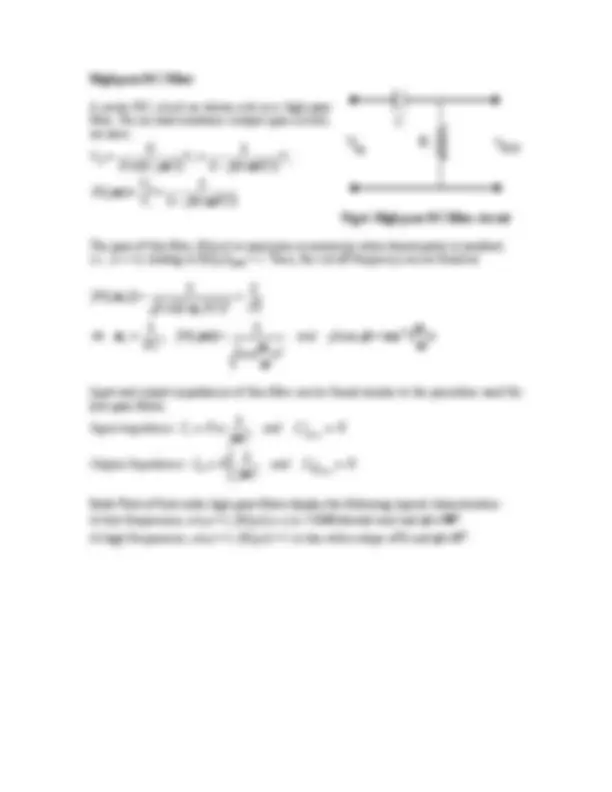
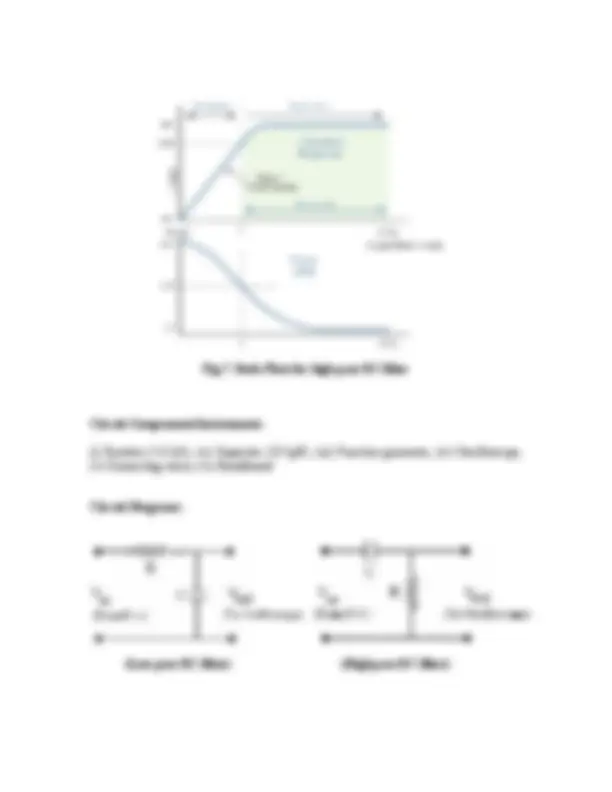
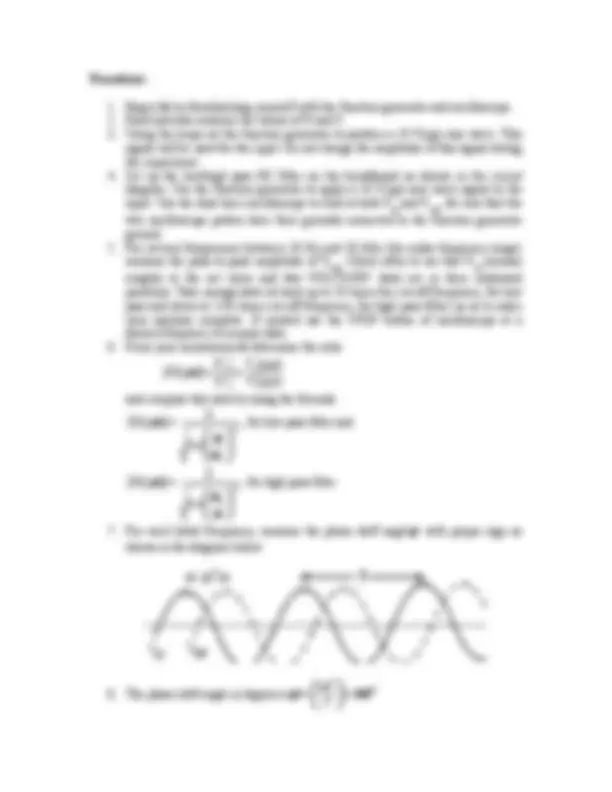
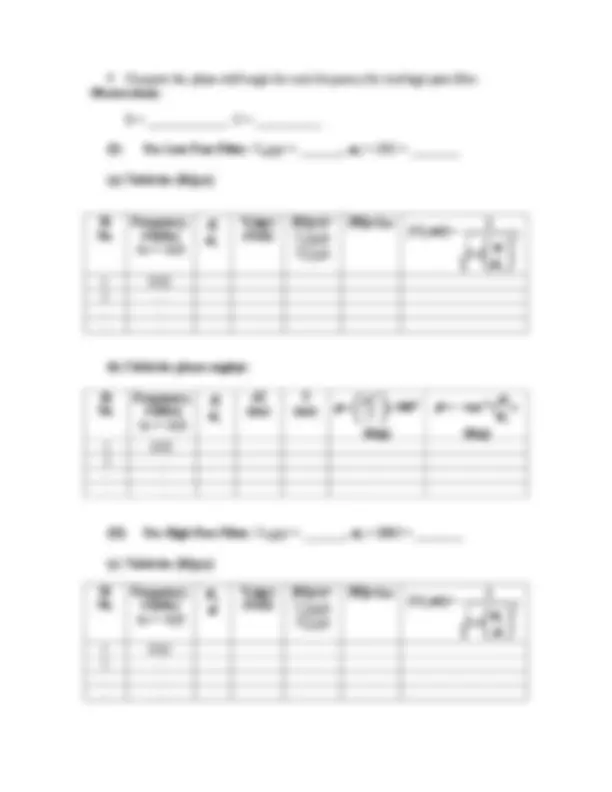
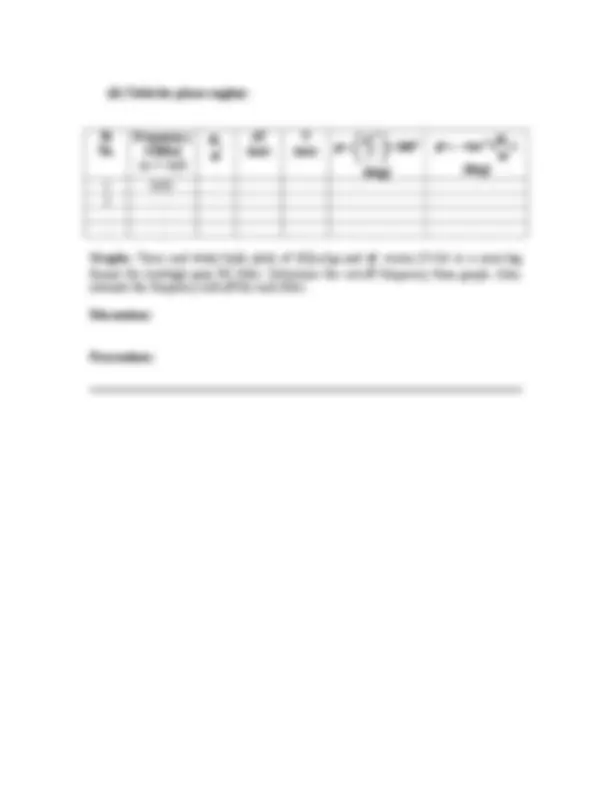
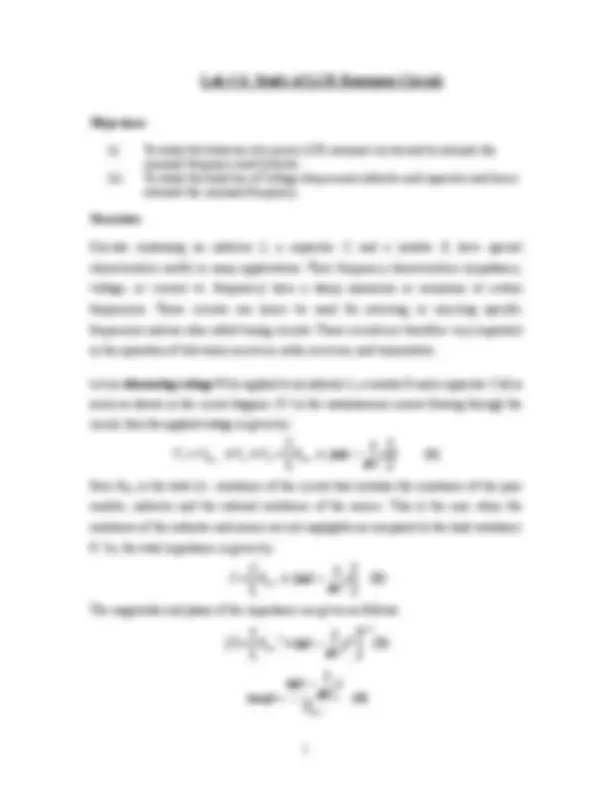
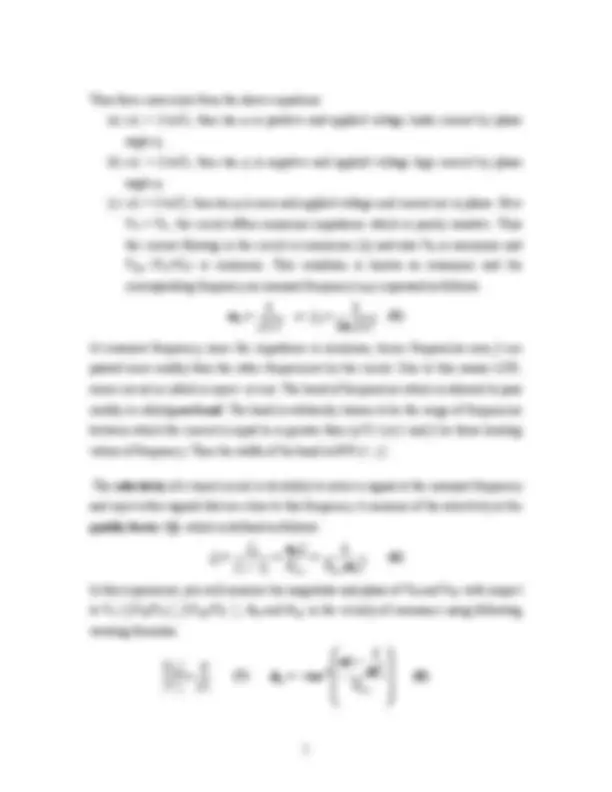
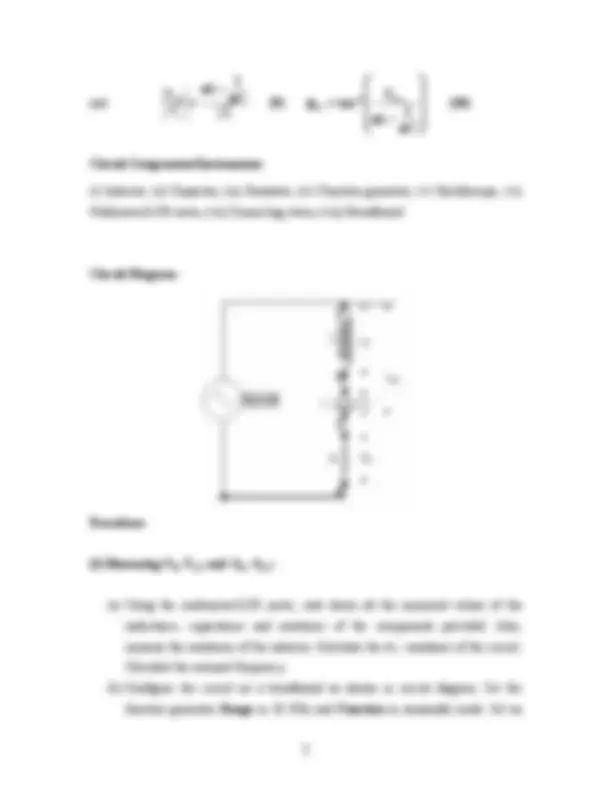
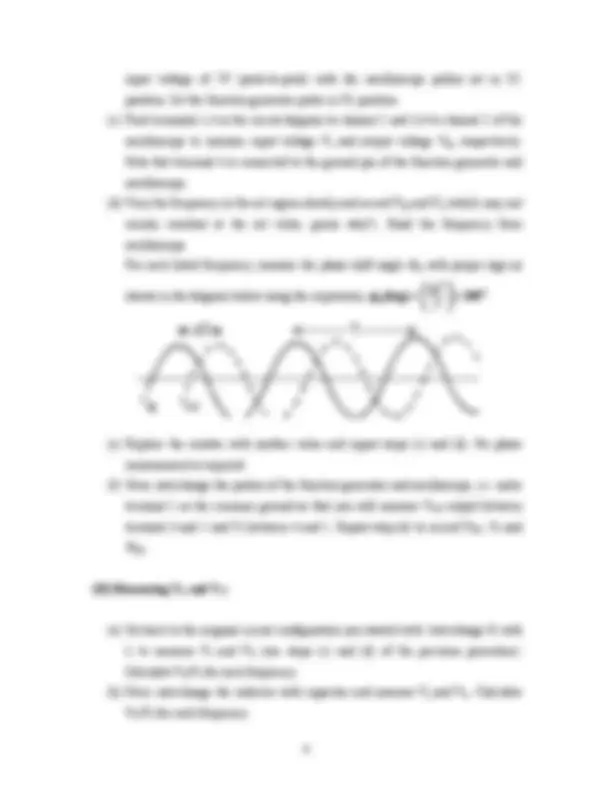
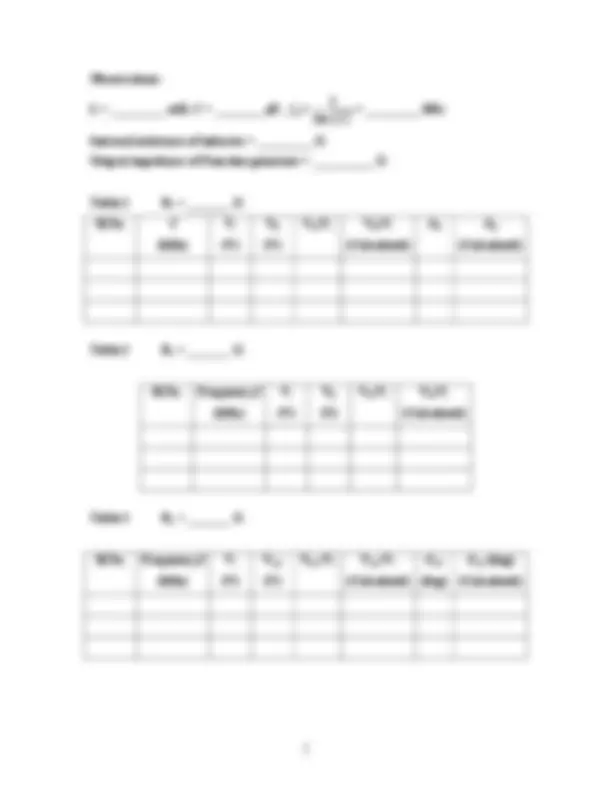
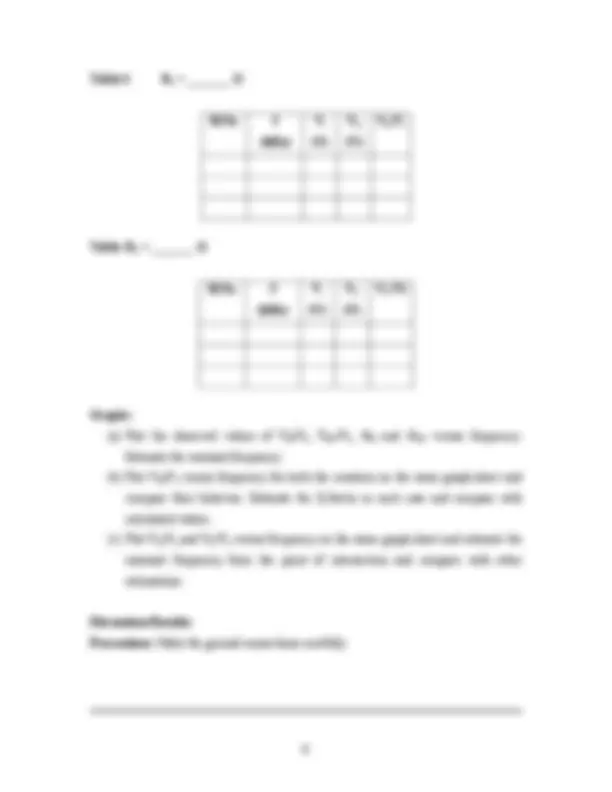
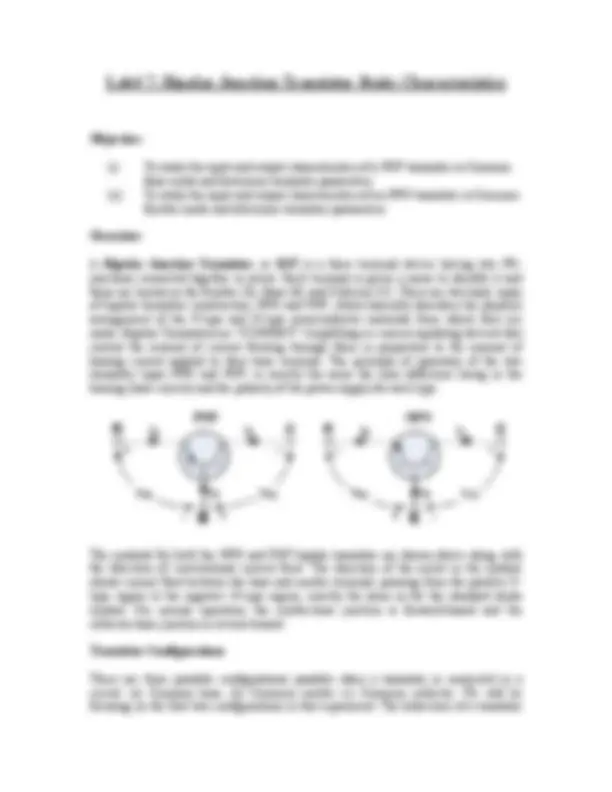
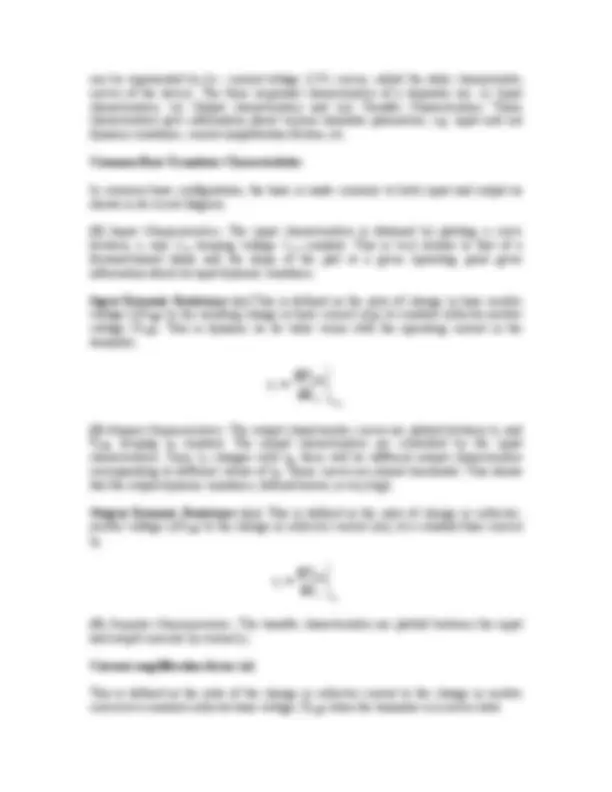
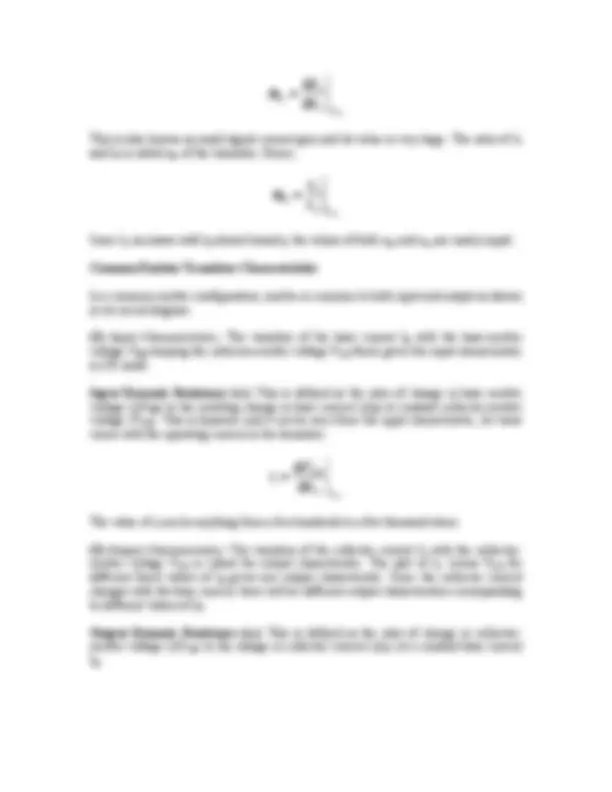
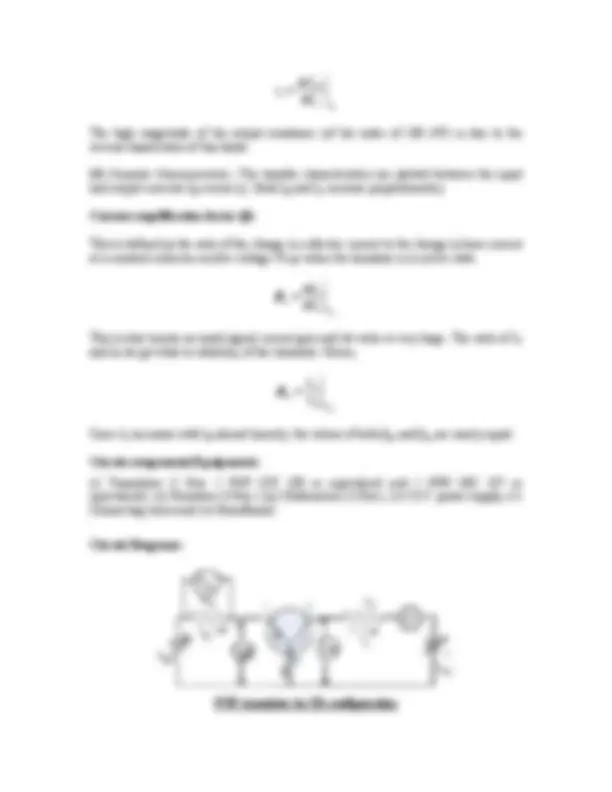

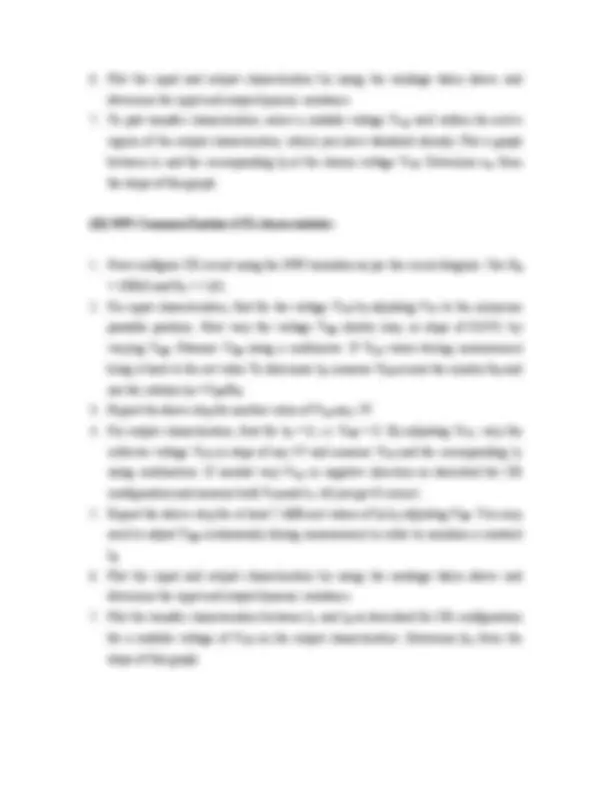
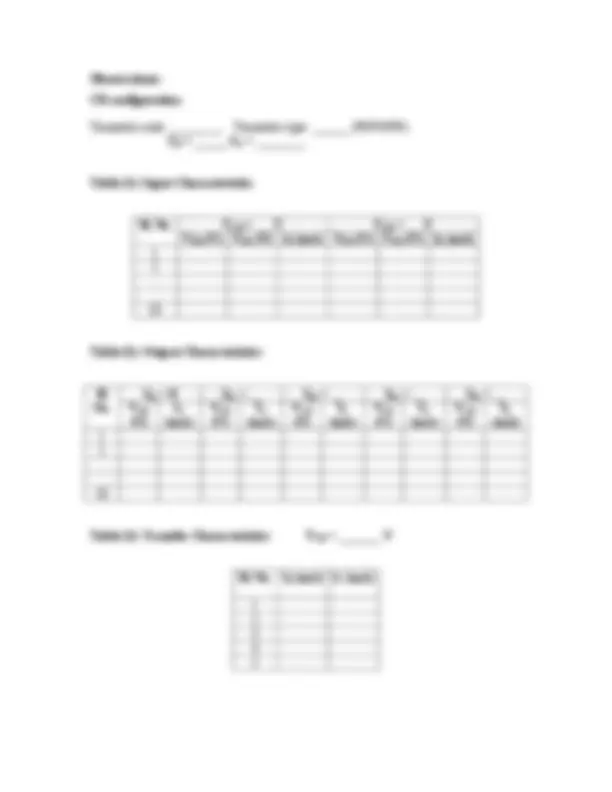
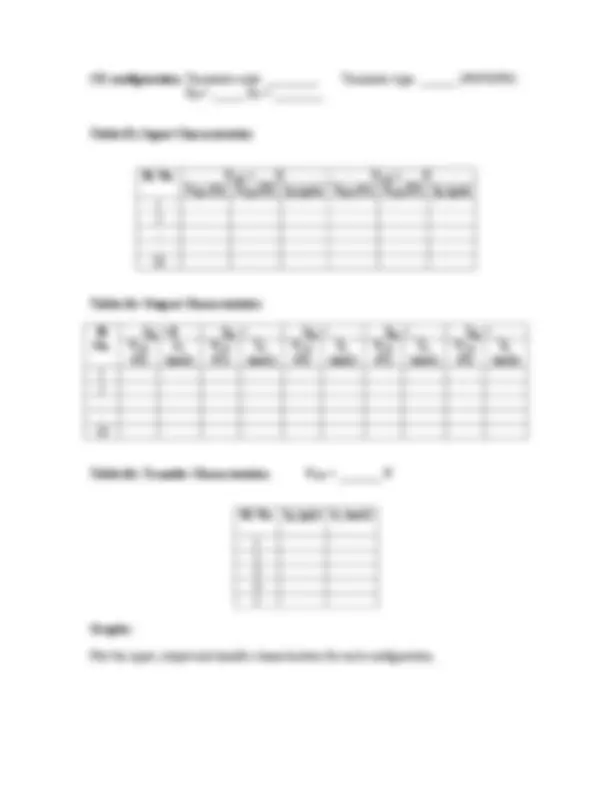
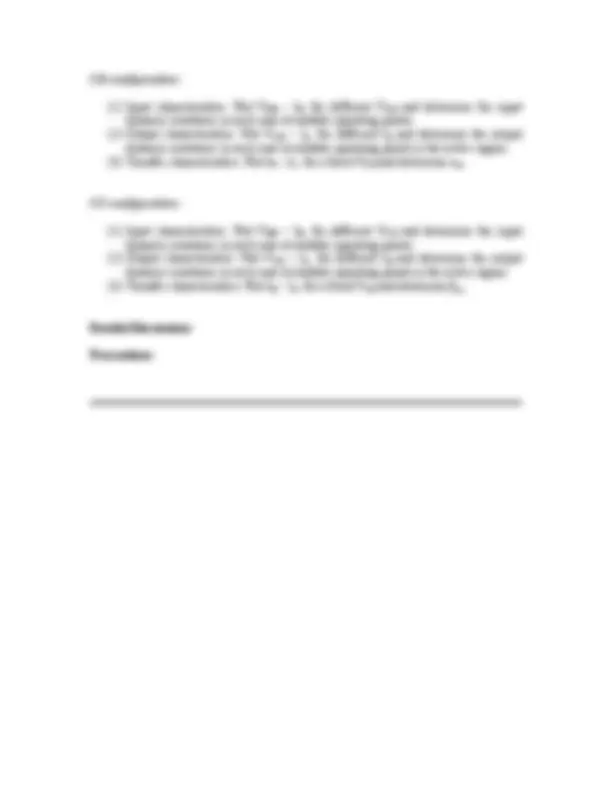
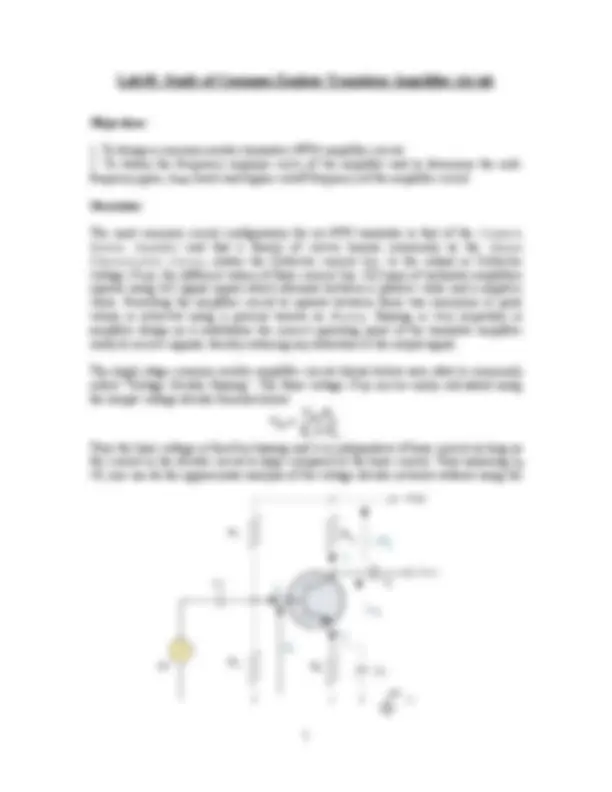
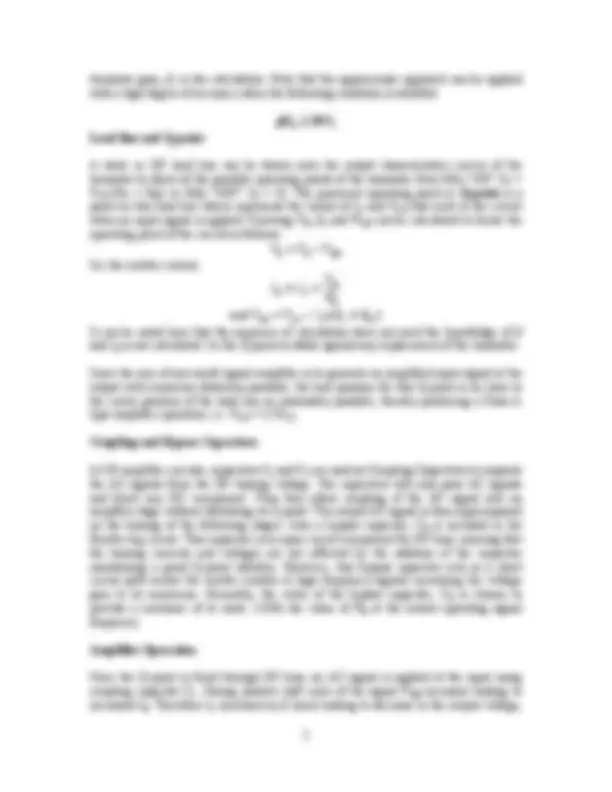
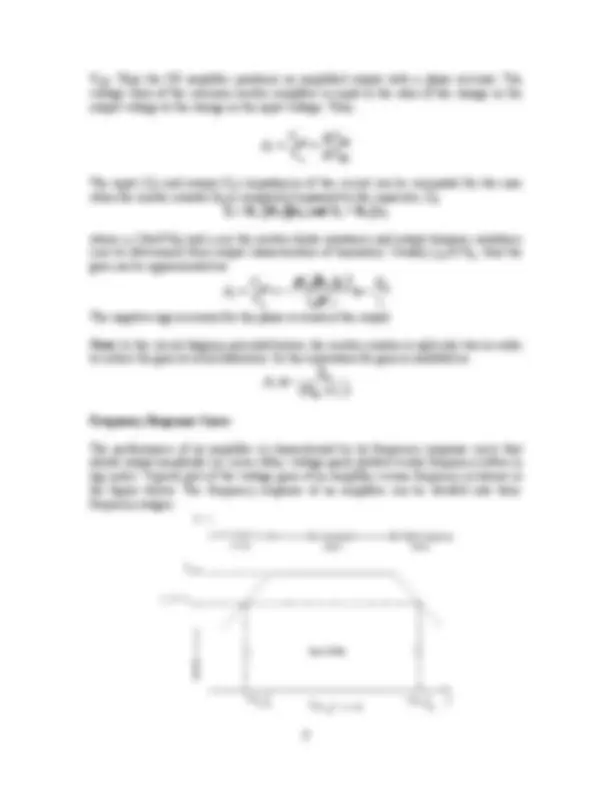

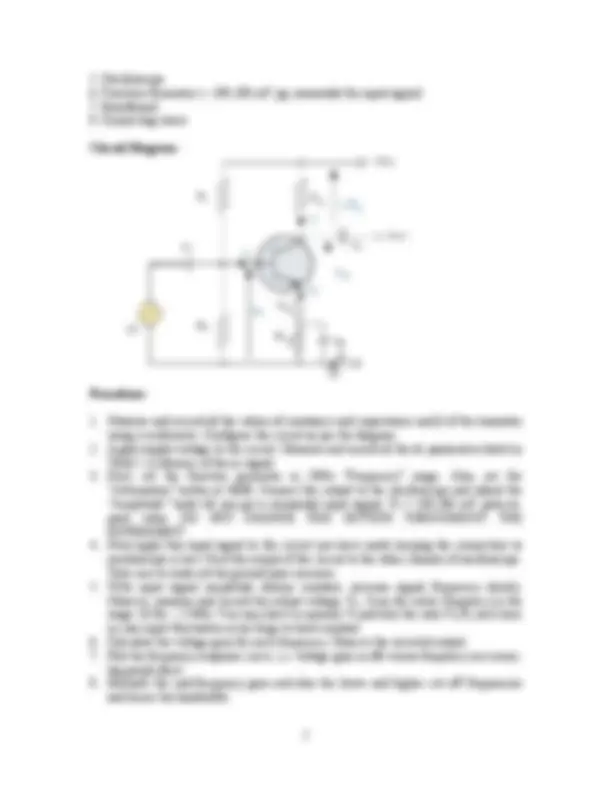
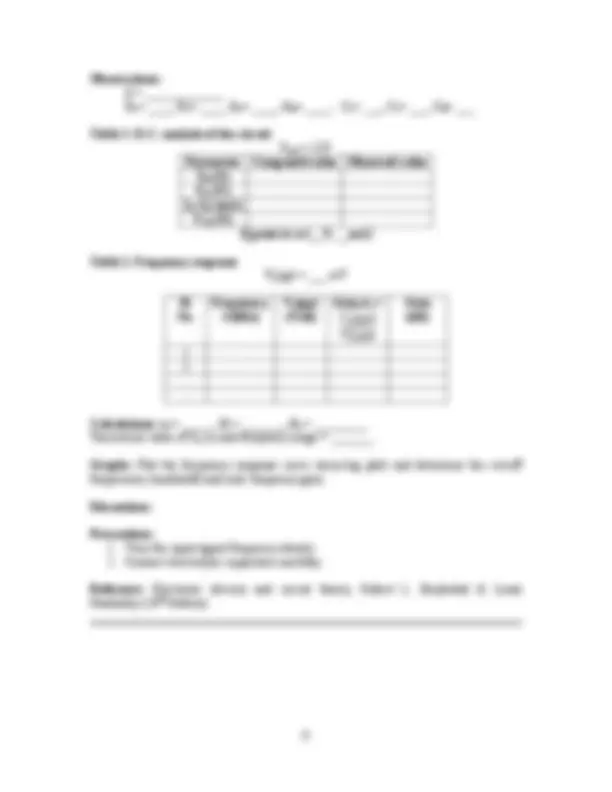
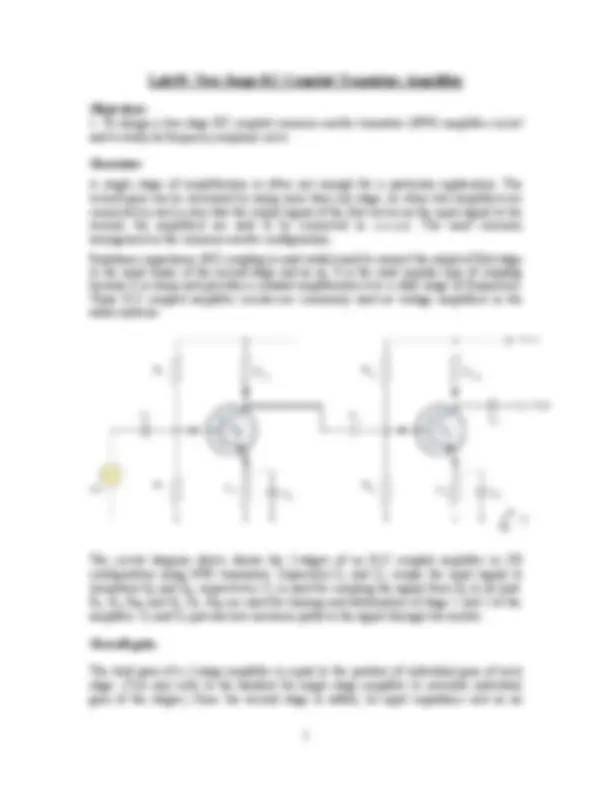
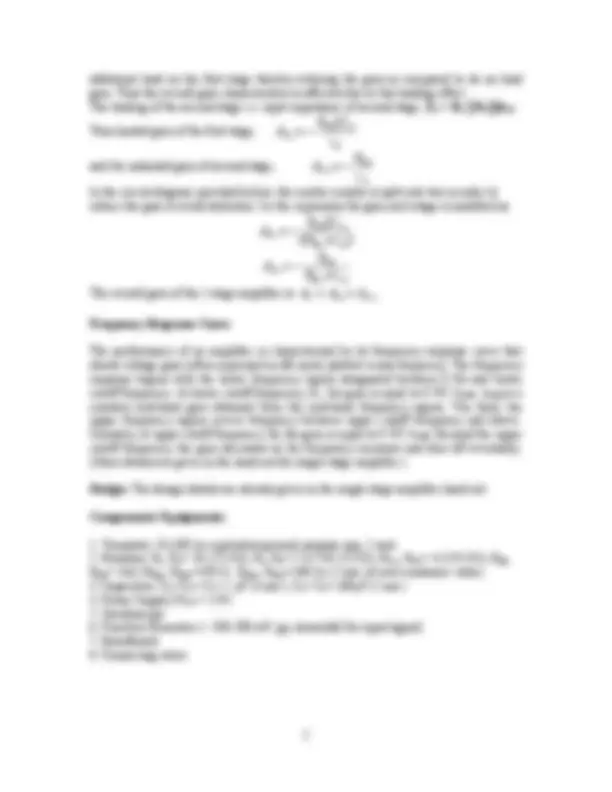
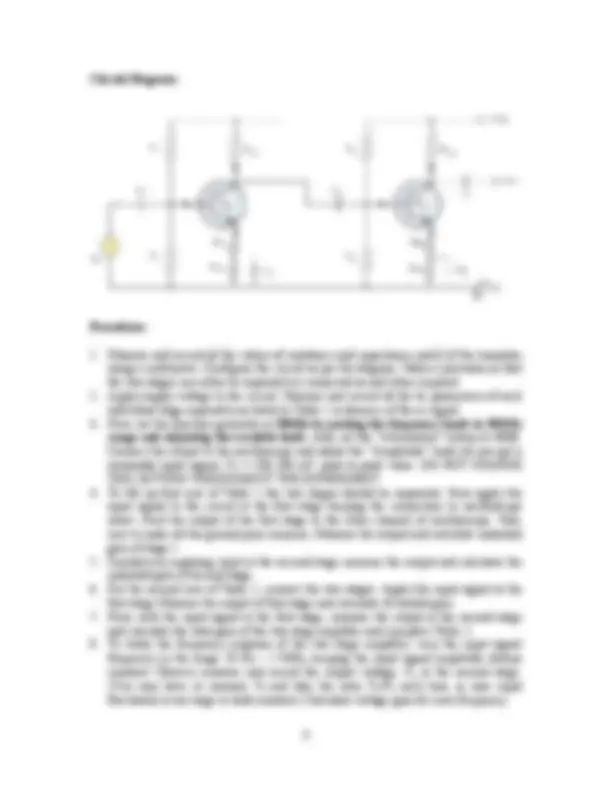
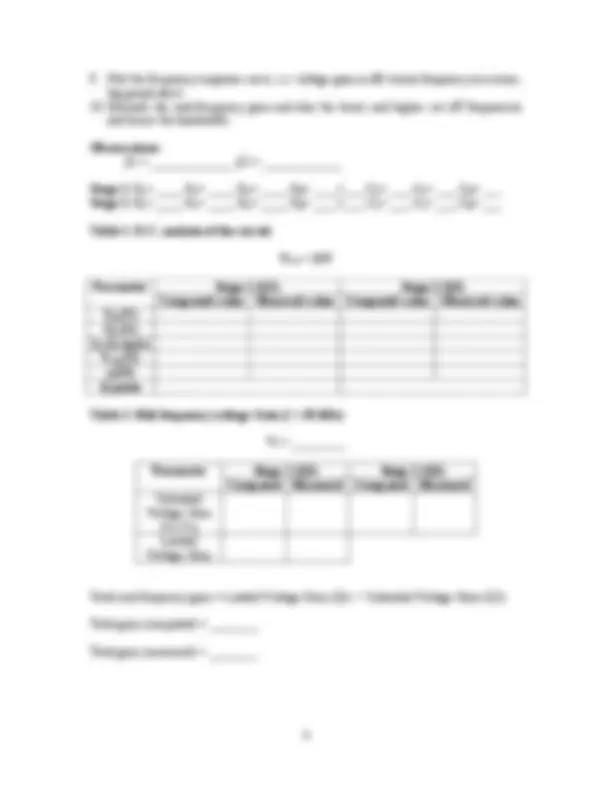
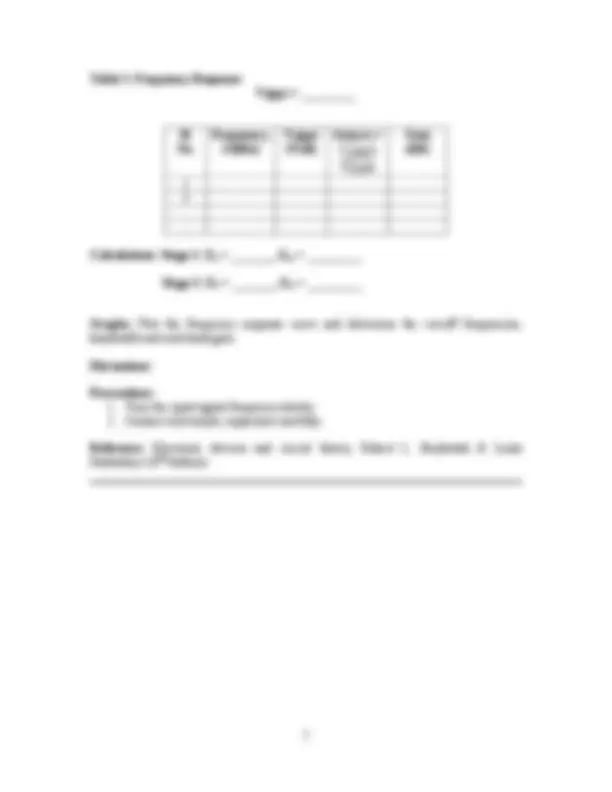


Study with the several resources on Docsity

Earn points by helping other students or get them with a premium plan


Prepare for your exams
Study with the several resources on Docsity

Earn points to download
Earn points by helping other students or get them with a premium plan
Community
Ask the community for help and clear up your study doubts
Discover the best universities in your country according to Docsity users
Free resources
Download our free guides on studying techniques, anxiety management strategies, and thesis advice from Docsity tutors
antenna design
Typology: Study notes
1 / 67

This page cannot be seen from the preview
Don't miss anything!




























































Last updated July 2013, NISER, Bhubaneswar
School of Physical sciences
NATIONAL INSTRITUTE OF SCIENCE EDUCATION AND RESEARCH (NISER) BHUBANESWAR
Last updated July 2013, NISER, Bhubaneswar
rd
These breadboard sockets are sturdy and rugged, and can take quite a bit of handling. However, there are a few rules you need to observe, in order to extend the useful life of the electrical contacts and to avoid damage to components. These rules are:
Always make sure power is disconnected when constructing or modifying your experimental circuit. It is possible to damage components or incur an electrical shock if you leave power connected when making changes. Never use larger wire as jumpers. #24 wire (used for normal telephone wiring) is an excellent choice for this application. Observe the same limitation with respect to the size of component leads. Whenever possible, use ¼ watt resistors in your circuits. ½ watt resistors may be used when necessary; resistors of higher power ratings should never be inserted directly into a breadboard socket. Never force component leads into contact holes on the breadboard socket. Doing so can damage the contact and make it useless. Do not insert stranded wire or soldered wire into the breadboard socket. If you must have stranded wire (as with an inductor or transformer lead), solder (or use a wire nut to connect) the stranded wire to a short length of solid hookup wire, and insert only the solid wire into the breadboard.
If you follow these basic rules, your breadboard will last indefinitely, and your experimental components will last a long time.
Resistors
Most axial resistors use a pattern of colored stripes to indicate resistance. A 4 band identification is the most commonly used color coding scheme on all resistors. It consists of four colored bands that are painted around the body of the resistor. Resistor values are always coded in ohms (Ω). The color codes are given in the following table in Fig. 1.
Fig. 1: Color codes of Resistors
band A is first significant figure of component value band B is the second significant figure band C is the decimal multiplier band D if present, indicates tolerance of value in percent (no color means 20%)
For example, a resistor with bands of yellow, violet, red, and gold will have first digit 4 (yellow in table below), second digit 7 (violet), followed by 2 (red) zeros: 4,700 ohms. Gold signifies that the tolerance is ±5%, so the real resistance could lie anywhere between 4,465 and 4,935 ohms.
Tight tolerance resistors may have three bands for significant figures rather than two, and/or an additional band indicating temperature coefficient, in units of ppm/K. For large power resistors and potentiometers, the value is usually written out implicitly as "10 kΩ", for instance.
Capacitors:
You will mostly use electrolytic and ceramic capacitors for your experiments.
Electrolytic capacitors
An electrolytic capacitor is a type of capacitor that uses an electrolyte, an ionic conducting liquid, as one of its plates, to achieve a larger capacitance per unit volume than other types. They are used in relatively high- current and low-frequency electrical circuits. However, the voltage applied to these capacitors must be polarized; one specified terminal must always have positive potential with respect to the other. These are of two types, axial and radial capacitors as shown in adjacent figure. The arrowed stripe indicates the polarity, with the arrows pointing towards the negative pin.
Fig. 2:Axial and Radial Electrolytic capacitors
Warning: connecting electrolytic capacitors in reverse polarity can easily damage or destroy the capacitor. Most large electrolytic capacitors have the voltage, capacitance, temperature ratings, and company name written on them without having any special color coding schemes.
Axial electrolytic capacitors have connections on both ends. These are most frequently used in devices where there is no space for vertically mounted capacitors.
Radial electrolytic capacitors are like axial electrolytic ones, except both pins come out the same end. Usually that end (the "bottom end") is mounted flat against the PCB and
The ratings of a diode (as stated earlier) are the limiting values of operating conditions, which if exceeded could cause damage to a diode by either voltage breakdown or overheating. The PN junction diodes are generally rated for: MAXIMUM AVERAGE FORWARD CURRENT, PEAK RECURRENT FORWARD CURRENT, MAXIMUM SURGE CURRENT, and PEAK REVERSE VOLTAGE
Maximum average forward current is usually given at a special temperature, usually 25º C, (77º F) and refers to the maximum amount of average current that can be permitted to flow in the forward direction. If this rating is exceeded, structure breakdown can occur.
Peak recurrent forward current is the maximum peak current that can be permitted to flow in the forward direction in the form of recurring pulses. Maximum surge current is the maximum current permitted to flow in the forward direction in the form of nonrecurring pulses. Current should not equal this value for more than a few milliseconds.
Peak reverse voltage (PRV) is one of the most important ratings. PRV indicates the maximum reverse-bias voltage that may be applied to a diode without causing junction breakdown. All of the above ratings are subject to change with temperature variations. If, for example, the operating temperature is above that stated for the ratings, the ratings must be decreased.
There are many types of diodes varying in size from the size of a pinhead (used in subminiature circuitry) to large 250-ampere diodes (used in high-power circuits). Because there are so many different types of diodes, some system of identification is needed to distinguish one diode from another. This is accomplished with the semiconductor identification system shown in Fig. 4. This system is not only used for diodes but transistors and many other special semiconductor devices as well. As illustrated in this figure, the system uses numbers and letters to identify different types of semiconductor devices. The first number in the system indicates the number of junctions in the semiconductor device and is a number, one less than the number of active elements. Thus 1 designates a diode; 2 designates a transistor (which may be considered as made up of two diodes); and 3 designates a tetrode (a four-element transistor). The letter "N" following the first number indicates a semiconductor. The 2- or 3-digit number following the letter "N" is a serialized identification number. If needed, this number may contain a suffix letter after the last digit. For example, the suffix letter "M" may be used to describe matching pairs of separate semiconductor devices or the letter "R" may be used to indicate reverse polarity. Other letters are used to indicate modified versions of the device which can be substituted for the basic numbered unit. For example, a semiconductor diode designated as type 1N345A signifies a two-element diode (1) of semiconductor material (N) that is an improved version (A) of type 345.
Fig. 4: Identification of Diode Fig. 5: Identification of Cathode
When working with different types of diodes, it is also necessary to distinguish one end of the diode from the other (anode from cathode). For this reason, manufacturers generally code the cathode end of the diode with a "k," "+," "cath," a color dot or band, or by an unusual shape (raised edge or taper) as shown in Fig. 5. In some cases, standard color code bands are placed on the cathode end of the diode. This serves two purposes: (1) it identifies the cathode end of the diode, and (2) it also serves to identify the diode by number.
Transistors are basically made up of two Diodes connected together back-to-back (Fig. 7). We can use this analogy to determine whether a transistor is of the type PNP or NPN by testing its Resistance between the three different leads, Emitter, Base and Collector.
Testing with a multimeter
Use a multimeter or a simple tester (battery, resistor and LED) to check each pair of leads for conduction. Set a digital multimeter to diode test and an analogue multimeter to a low resistance range.
Test each pair of leads both ways (six tests in total):
The base-emitter (BE) junction should behave like a diode and conduct one way only. The base-collector (BC) junction should behave like a diode and conduct one way only. The collector-emitter (CE) should not conduct either way.
The diagram shows how the junctions behave in an NPN transistor. The diodes are reversed in a PNP transistor but the same test procedure can be used.
Between Transistor Terminals PNP NPN Collector Emitter RHIGH RHIGH Collector Base RLOW RHIGH Emitter Collector RHIGH RHIGH Emitter Base RLOW RHIGH Base Collector RHIGH RLOW Base Emitter RHIGH RLOW
Fig. 7: Testing an NPN transistor
Lab # 2: Study of Normal and Zener Diode Characteristics
Objectives:
i) To study and plot the forward and reverse bias characteristics of a normal diode and to
determine the threshold voltage, static and dynamic resistance.
ii) To study and plot forward and reverse bias characteristics of a zener diode and to determine
the threshold and zener break-down voltage.
Overview:
A diode is a nonlinear circuit element. The symbol of a diode and a real commercial diode is
shown in Fig. 1. Generally there is a band marked at its cathode for its identification. There
exists another type of diode known as zener diode, which has a heavily doped PN junction.
Fig. 1
The theoretical equation for the diode current I (^) D is
exp( ) 1 T
D D S nV
where VD is the diode voltage drop, IS is the saturation current, n is the emission coefficient, and
VT = kT/q (≈ 0.026V at T=300K) is the thermal voltage. The emission coefficient accounts for
recombinations of electrons and holes in the depletion region, which tend to decrease the
current. For discrete diodes, it has the value n is 2.
The I~V characteristic of an ideal diode is shown in Fig. 2-a. Under forward biased condition
of a real PN junction diode, the P-side is connected to the positive and N-side is connected to
the negative terminal of the power supply. This reduces the potential barrier. As a result current
flows from P to N-type in forward direction. When the applied voltage is more than the barrier
potential, the resistance is small (ideally 0) and the current increases rapidly. This point is called
the Knee-point or turn-on voltage or threshold voltage (Fig. 2-b). This voltage is about 0.3 volts
for Ge diodes and 0.7 volts for Si diodes.
ANODE
D
DIODE
CATHODE
breakdown which does not damage the diode. The voltage drop across the diode remains
constant at zener voltage no matter how high the reverse bias voltage is. The forward
characteristic of a zener diode is similar to a normal diode. The symbol of a zener diode is
shown in Figure 3.
Fig. 3
Static and Dynamic Resistance:
At a given operating point, the static
and dynamic resistance of a diode can be
determined from its characteristics as shown
in Fig. 4. The static or dc resistance , RD, of
the diode at the operating point (the point
where the load line intersects the diode
characteristics), Q, is simply the quotient of
the corresponding levels of VD and I (^) D. The dc
resistance levels at the knee and below will be
greater than the resistance levels obtained for
the vertical rise section of the characteristics. Fig. 4
RD = VD/I (^) D
The diode circuits generally operate with varying inputs, which will move the instantaneous
operating point up and down a region of the characteristics and defines a specific change in
current and voltage. Dynamic or ac Resistance , r (^) d , is defined as the quotient of this change in
voltage and change in current around the dc operating point.
r (^) d = ∆VD/ ∆I (^) D
Components/Equipments:
(i) Junction diodes (Si,Ge), (ii) Zener diode, (iii) A current limiting Resistor (1kΩ), (iv) D.C.
Power supply, (iv) 2 multimeters and (vi) Breadboard, (vii) Connecting wires
Circuit Diagram:
Forward Biasing Reverse Biasing
Procedure:
Before you proceed, identify the p and n-side of the diode in order to connect properly
in forward and reverse bias mode.
(i) Forward and reverse bias characteristics of a normal diode:
Forward Bias characteristics:
power supply.
the fine adjustment knob and note down the corresponding readings of diode current. When you find the change in current is larger (which means you have already crossed the threshold point!), increase the supply voltage in steps of 0.5 to note down current.
current in the circuit. Switch off the supply after taking sufficient readings.
and dynamic resistance at each of the points.
Reverse Bias characteristics:
power supply.
diode current.
current flowing in the circuit will be very small, so choose current range properly. Switch off the supply after taking sufficient readings.
current.
V
A
V
A
Graphs:
Plot I~V characteristics for both the diodes and estimate the required parameters.
Discussions/Results:
i) Describe the behavior of the I~V curve for each diode.
ii) Threshold voltage for normal diode is ______V (What type of a diode it is, Si/Ge?)
Static resistance = ------, Dynamic resistance = ------ at operating point Q.
iii) Threshold voltage for Zener diode = --------
Zener Break-down voltage = -------
Precautions:
____________________________________________________________________________
LAB#3(a): HALF-WAVE RECTIFIER CIRCUIT WITHOUT AND WITH FILTER
Objectives:
Overview:
The process of converting an alternating current into direct current is known as rectification.
The unidirectional conduction property of semiconductor diodes (junction diodes) is used for
rectification. Rectifiers are of two types: (a) Half wave rectifier and (b) Full wave rectifier. In a half-
wave rectifier circuit (Fig. 1), during the positive half-cycle of the input, the diode is forward biased
and conducts. Current flows through the load and a voltage is developed across it. During the negative
half-cycle, it is reverse bias and does not conduct. Therefore, in the negative half cycle of the supply,
no current flows in the load resistor as no voltage appears across it. Thus the dc voltage across the load
is sinusoidal for the first half cycle only and a pure a.c. input signal is converted into a unidirectional
pulsating output signal.
Fig.1: Half-wave rectifier circuit
Since the diode conducts only in one half-cycle (0-π), it can be verified that the d.c. component in the
resulting in small ripple voltage.
Fig.2: Half-wave rectifier circuit with capacitor filter
The working of the capacitor can be understood in the following manner. When the rectifier
output voltage is increasing, the capacitor charges to the peak voltage Vm. Just past the positive peak
the rectifier output voltage tries to fall. As the source voltage decreases below V (^) m , the capacitor will
try to send the current back to diode making it reverse biased. Thus the diode separates/disconnects the
source from the load and hence the capacitor will discharge through the load until the source voltage
becomes more than the capacitor voltage. The diode again starts conducting and the capacitor is again
charged to the peak value Vm and the process continues. Although in the output waveform the
discharging of capacitor is shown as a straight line for simplicity, the decay is actually the normal
exponential decay of any capacitor discharging through a load resistor. The extent to which the
capacitor voltage drops depends on the capacitance and the amount of current drawn by the load; these
two factors effectively form the RC time constant for voltage decay. A proper combination of large
capacitance and small load resistance can give out a steady output.
Circuit components/Equipments:
(i) A step-down transformer, (ii) A junction diode, (iii) 3 Load resistors, (iv) 3 Electrolytic Capacitors, (v) Oscilloscope, (vi) Multimeters, (vii) Connecting wires, (viii) Breadboard.
Smoothing Capacitor
C Charges C Disharges
(With capacitor)
Circuit Diagram: (As shown in Figs. 1 and 2)
Procedure:
i) Configure the half-wave rectifier circuit as shown in the circuit diagram. Note down all the values of the components being used. ii) Connect the primary side of the transformer to the a.c. Mains and secondary to the input of the circuit. iii) Measure the input a.c. voltage (V (^) ac) and current (I (^) ac) and the output a.c. (Vac), d.c. (V (^) dc) voltages using multimeter for at least 3 values of load resistor (Be careful to choose proper settings of multimeter for ac and dc measurement). iv) Multiply the Vac at the input by √2 to get the peak value and calculate Vdc using the formula Vdc = V (^) max / π. Compare this value with the measured Vdc at the output. v) Feed the input and output (in DC coupling mode) to the two channels of oscilloscope. We will use oscilloscope here only to trace the output waveform. Save the data for each measurement using SAVE/LOAD or STORAGE button of the oscilloscope. vi) Calculate the ripple factor and efficiency. vii) Connect an electrolytic capacitor (with –ve terminal connected to ground) across the output for each load resistor and measure the output a.c. and d.c. voltages once again and calculate the ripple factor. Trace the input and output waveforms in oscilloscope and notice the change. viii) Repeat the above measurement foe all values of capacitors and study the output.
Observations:
Table(I): Half wave rectifier w/o filter
Sl. No Load
R (kΩ)
Input Current I (^) ac (mA)
Output Voltage Ripple Factor r
Efficiency η (V^2 dc/R)/VacI (^) ac (%)
Vac (Volt)
Vdc (Volt)
V (^) max / π (Volt) 1
2